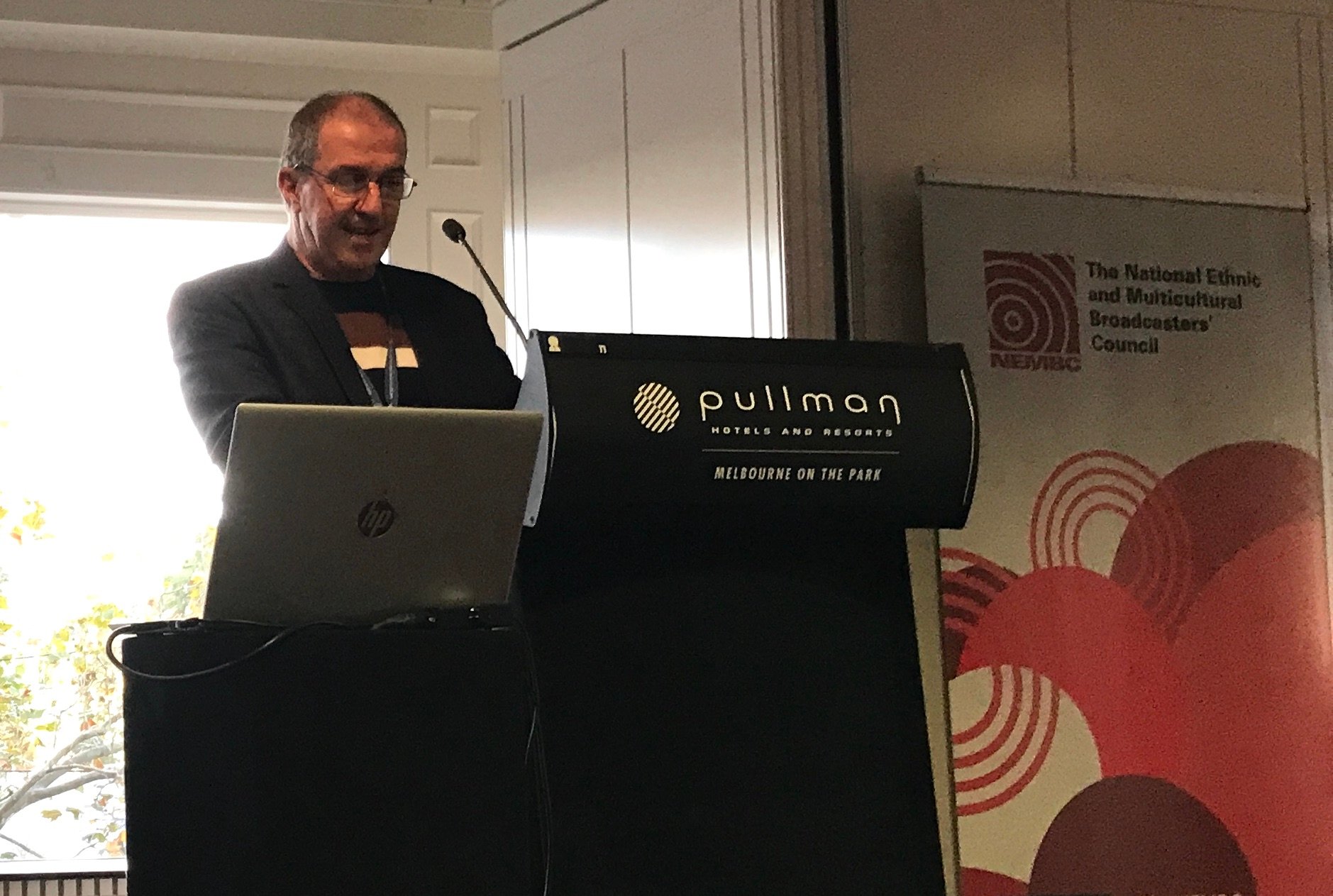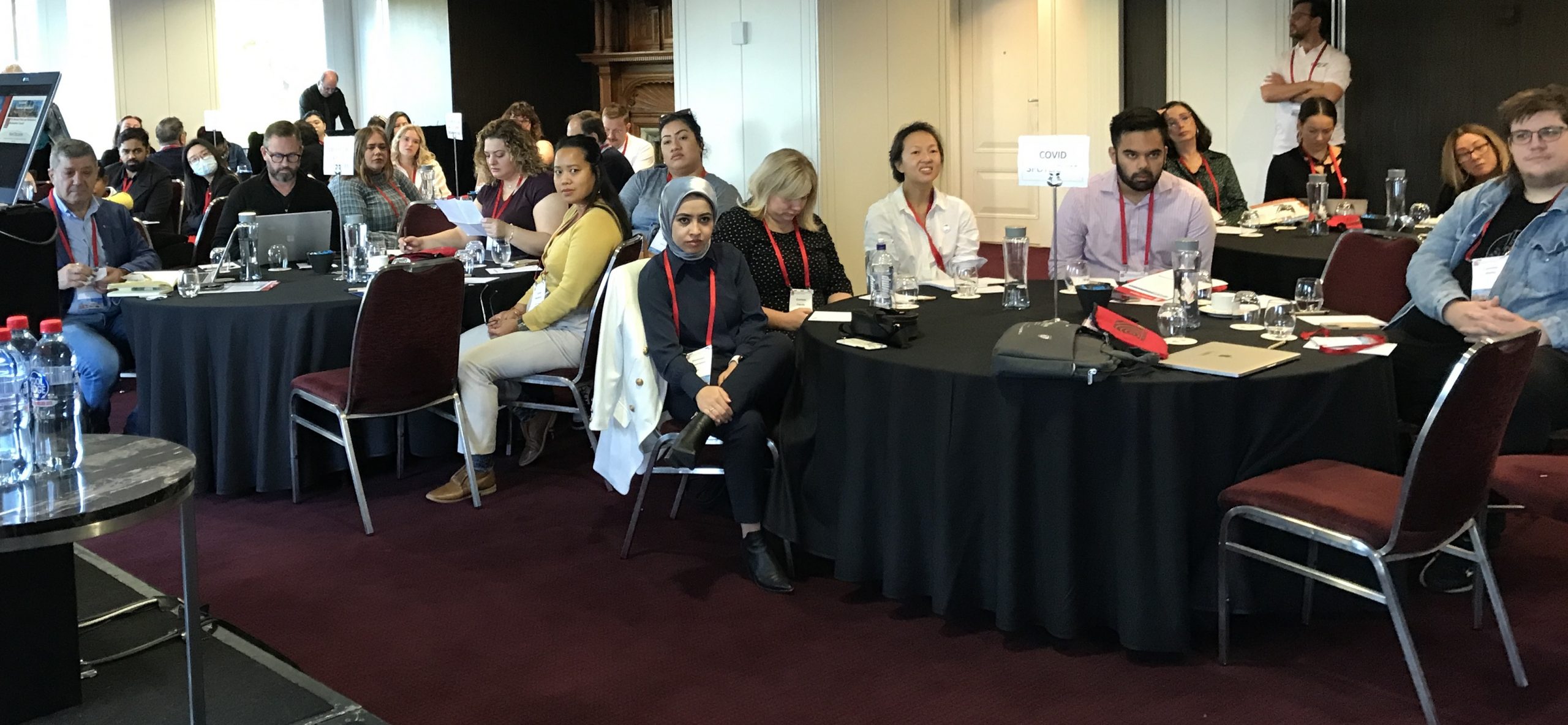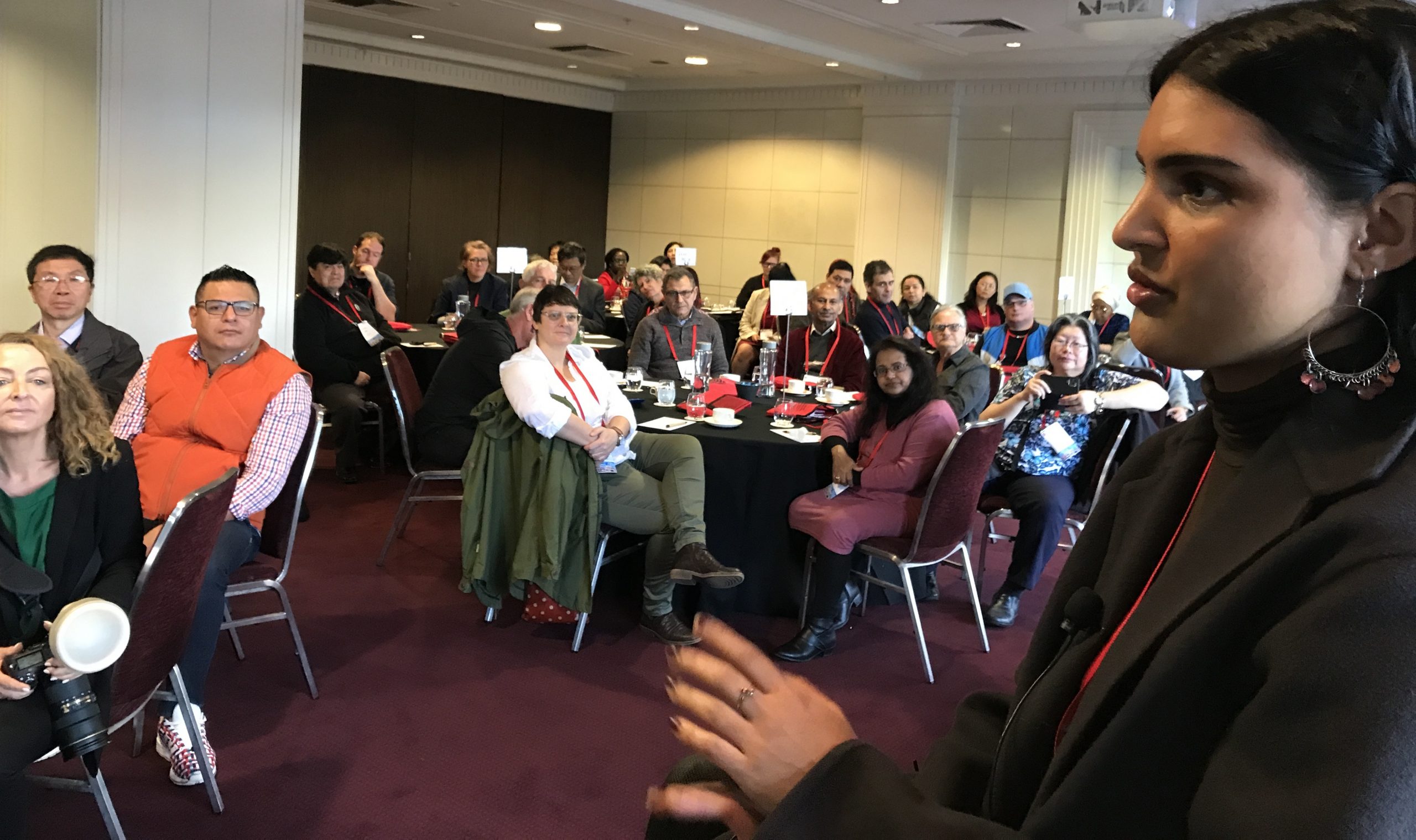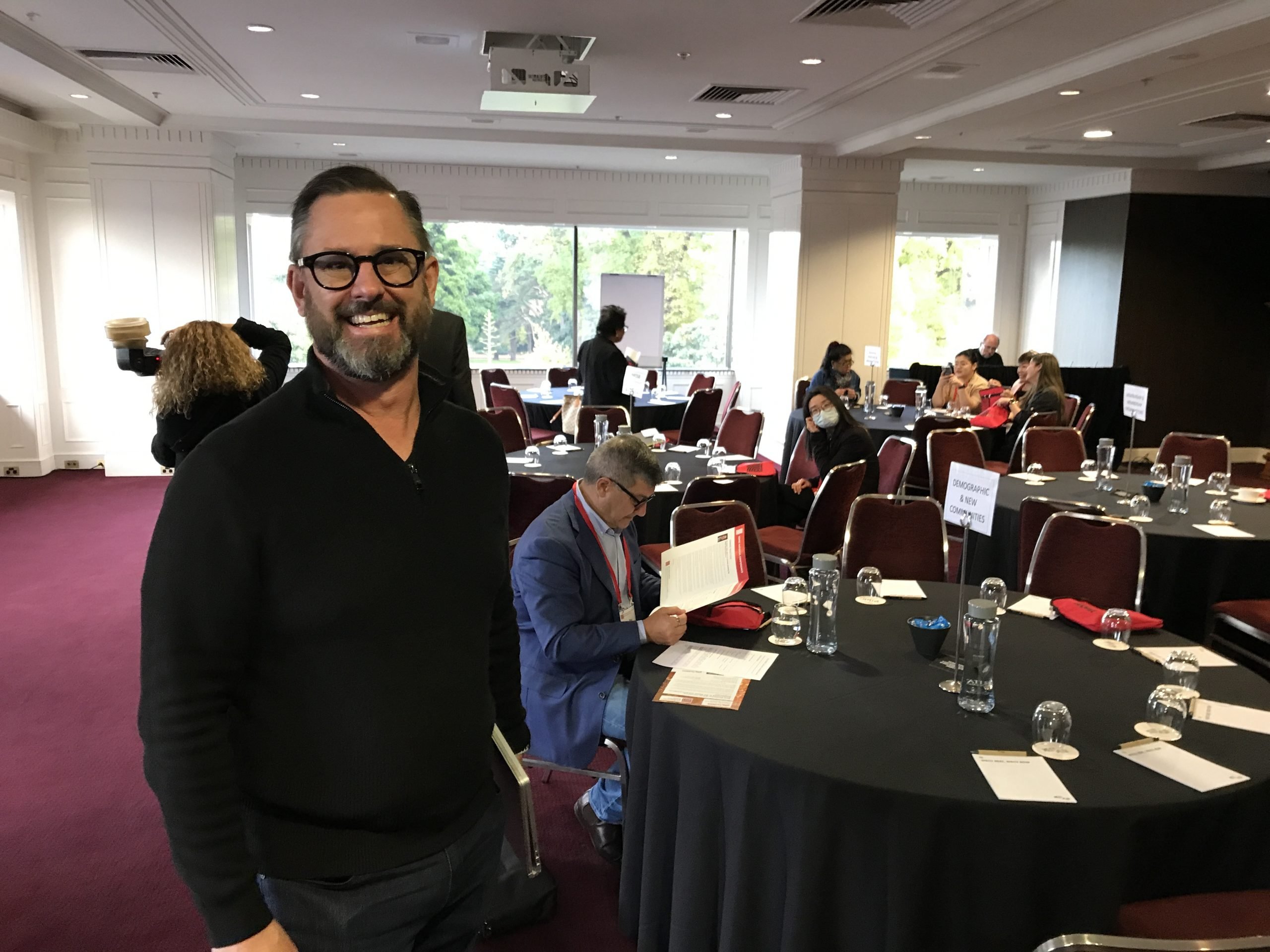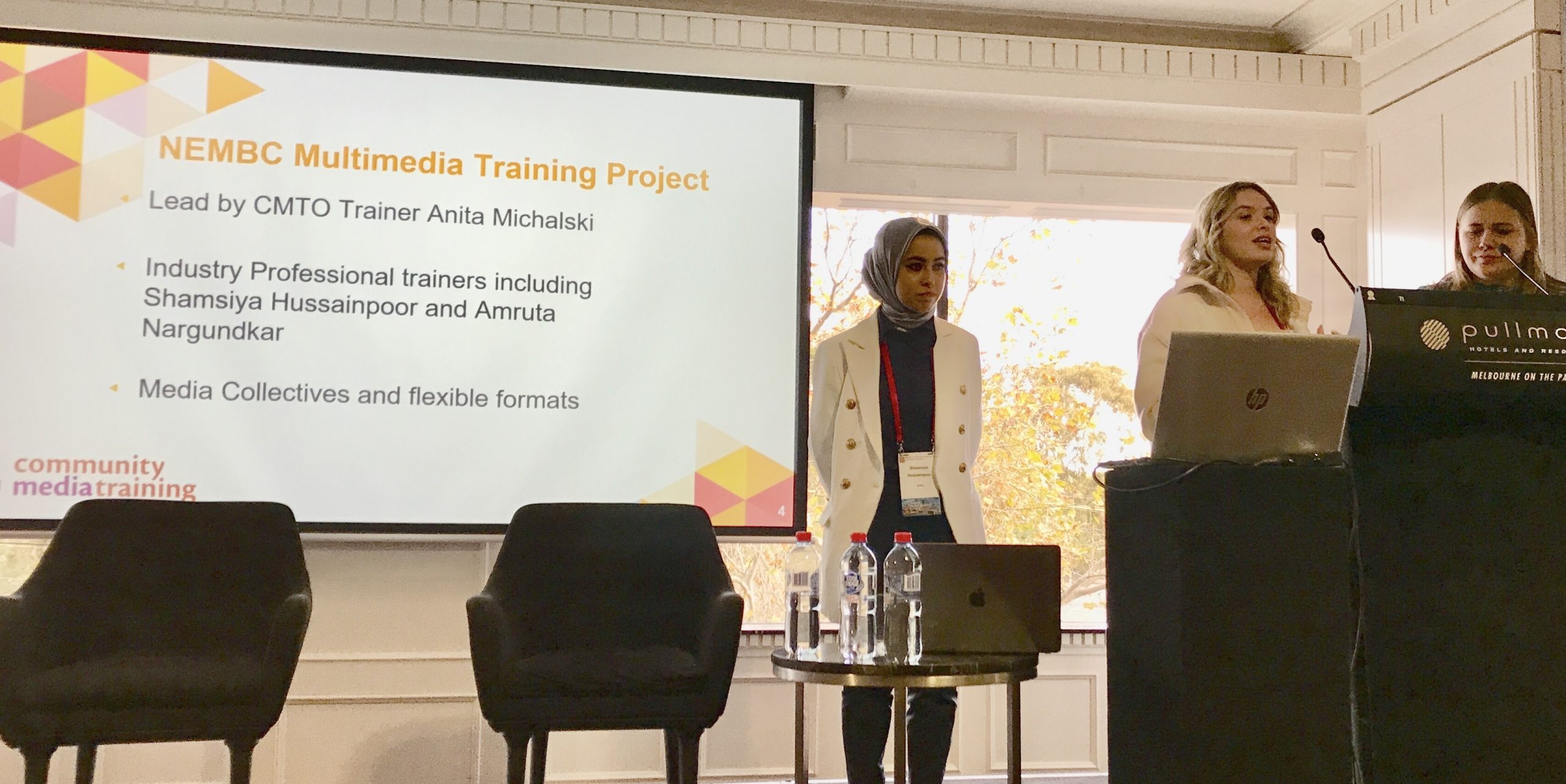The NEMBC Conference has begun in Melbourne this morning at the Pullman Hotel.
Opening the conference NEMBC President Nick Dmyterko congratulated the new federal government and said the NEMBC looks forward to cementing ties with the Albanese government for the benefit of the ethnic broadcaasting sector.
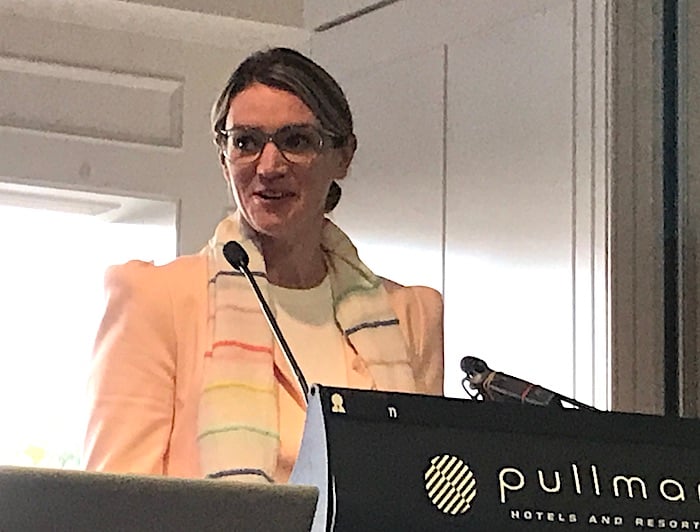
MP for Footscray, Katie Hall, in an opening keynote, said: “Community radio connected us all during covid… it was comforting to listen to people across Melbourne share their stories while we were in lockdown.”
The first session was a multi faceted discussion about all the topics that have not been able to be discussed in person for the past few years due to covid.
On the panel, which was moderated by Juan Paolo Legaspi, were Steve Ahern, Rosanna Maloney, previously of the NEMBC Ethnic News Service and 4EB Manager Jo Pratt.
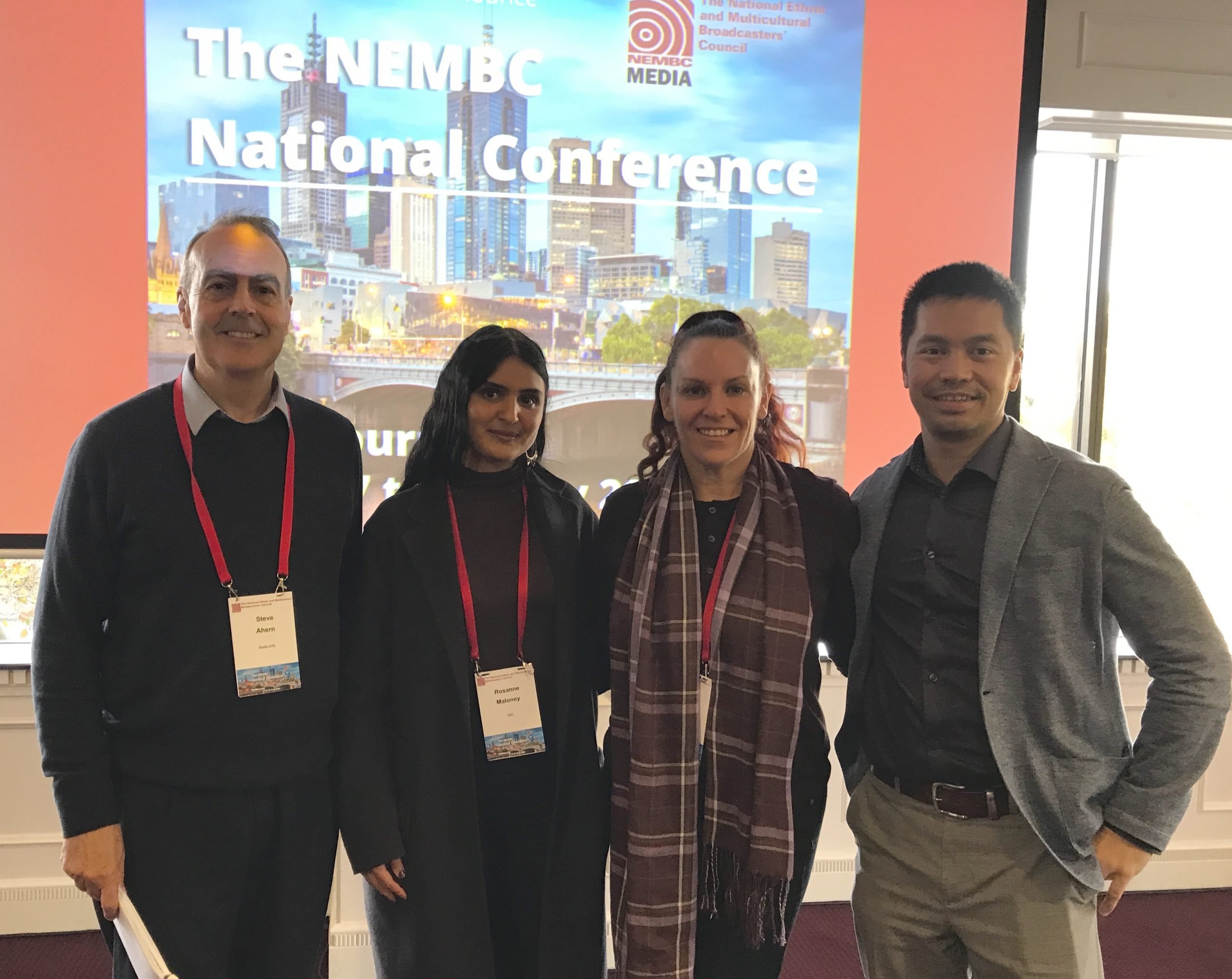
Steve made the point that Covid disruptions have accelerated the pace of digital transition for audiences and broadcasters. “Audiences are now consuming audio on so many new platforms, they have changed their habits,” he said. “Trust is also an issue, the spread of misinformation on social media, intentional undermining of credible news services by politicians and poor journalism by some broadcasters and podcasters has undermined trust in media, we need to win it back.”
Steve also revealed that the new 4th edition of his well known text Book will be published in two weeks , from June 9. Making Radio & Podcasts is available to pre-order from Routledge here.
Rosanna explained that the usual shorthand of radio news writing does not always work well for ethnic communities whose language is not English. “Hotspots and friend bubbles are terms that don’t translate, so when we wrote these terms in the ethnic news service we had to change the way we did it, making sure that we explained the meaning and didn’t just use the common term being used in other news services,” she said.
Jo talked about the way her station has changed due to lockdowns. “When people were not able to come into the building they had to learn how to make their programs from home and send them to our studio computer… it was difficult but has now opened up some new ways of working.”
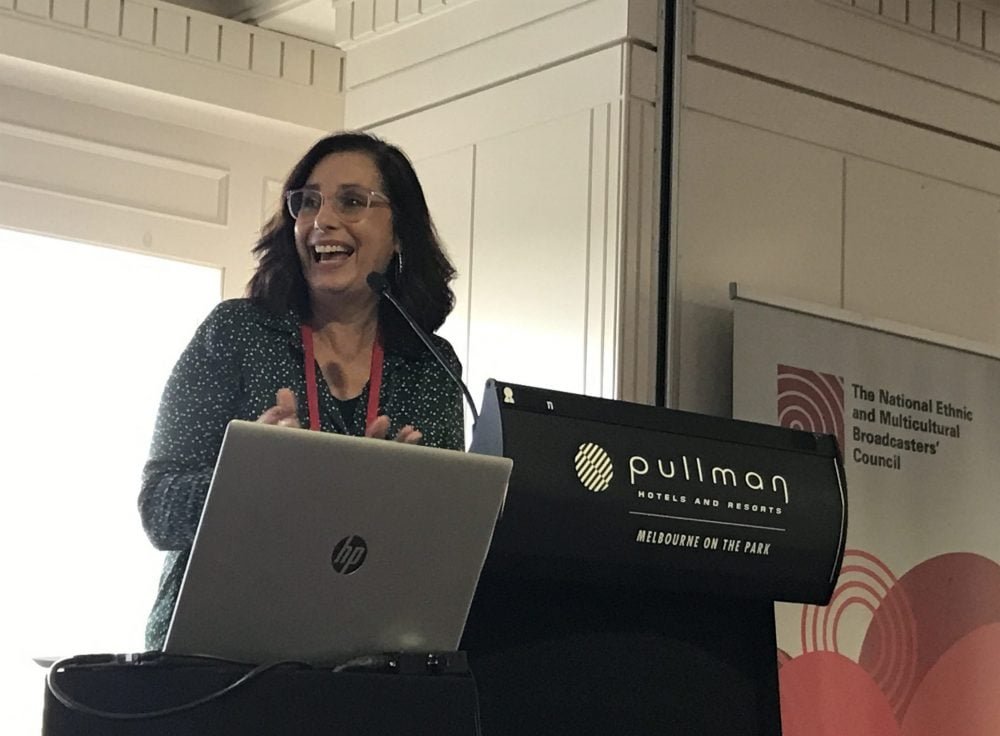
Speaking about a Griffith University research study into the sector, Heather Anderson and Susan Forde (pictured) gathered views on a range of topics of significance to the sector, ranging from covid changes, to language, digital platforms, the changing nature of the volunteer ethnic workforce, and regional ethnic programming.
While making programs from home was generally a good new trend in response to covid, there have been two key downsides for stations. One is that memberships have decreased and so has membership revenue. The second is that the sense of community that is usually built as a result of having lots of people together in the station has weakened due to lockdowns, so there is a need to have more station functions and events to reconned people again.
The study aims to advance understanding of the place of ethnic community broadcasting in an increasingly digital and disrupted world… and its role in social cohesion.
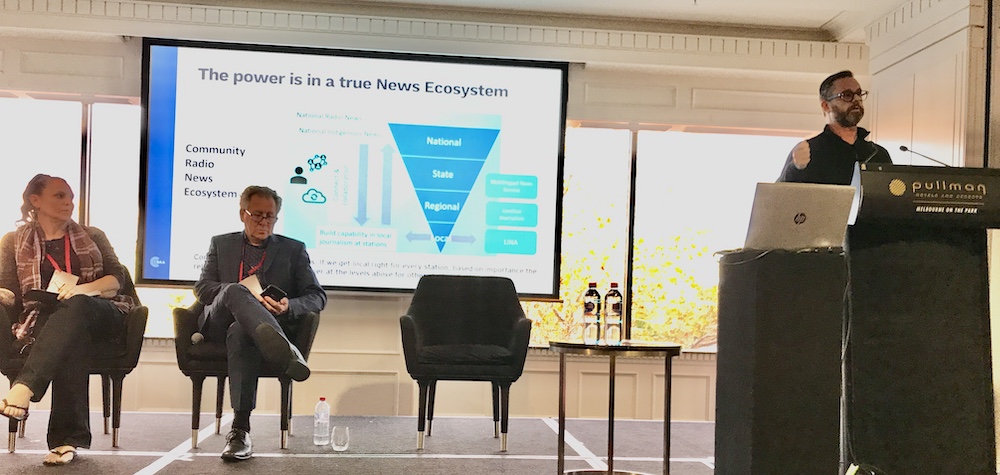
The growth of news in the sector was discussed in the final session of the day.
“It’s like we’ve been in crisis constantly lately, covid, floods and fires… community radio has really shown how important it is when there is a crisis, important in getting local news out and supporting communities,” said CBAA CEO Jon Bisset. “Local independent news lies at the centre of democracy.”
There is a trust crisis in journalism, according to Bisset. “Whenever we do research, community radio comes up as one of the most trusted media… there is a challenge to us to broadcast factual information and also to allow free speech.”
With media business models collapsing there is “an opportunity for community broadcasters” to do more in the area of news, but there is not enough funding to do everything the sector wants to do.
“Relevance is an important word… we need to think about news as an ecosystem. It is not just about local news… national, state and regional news is also relevant according to what audiences tell us.”
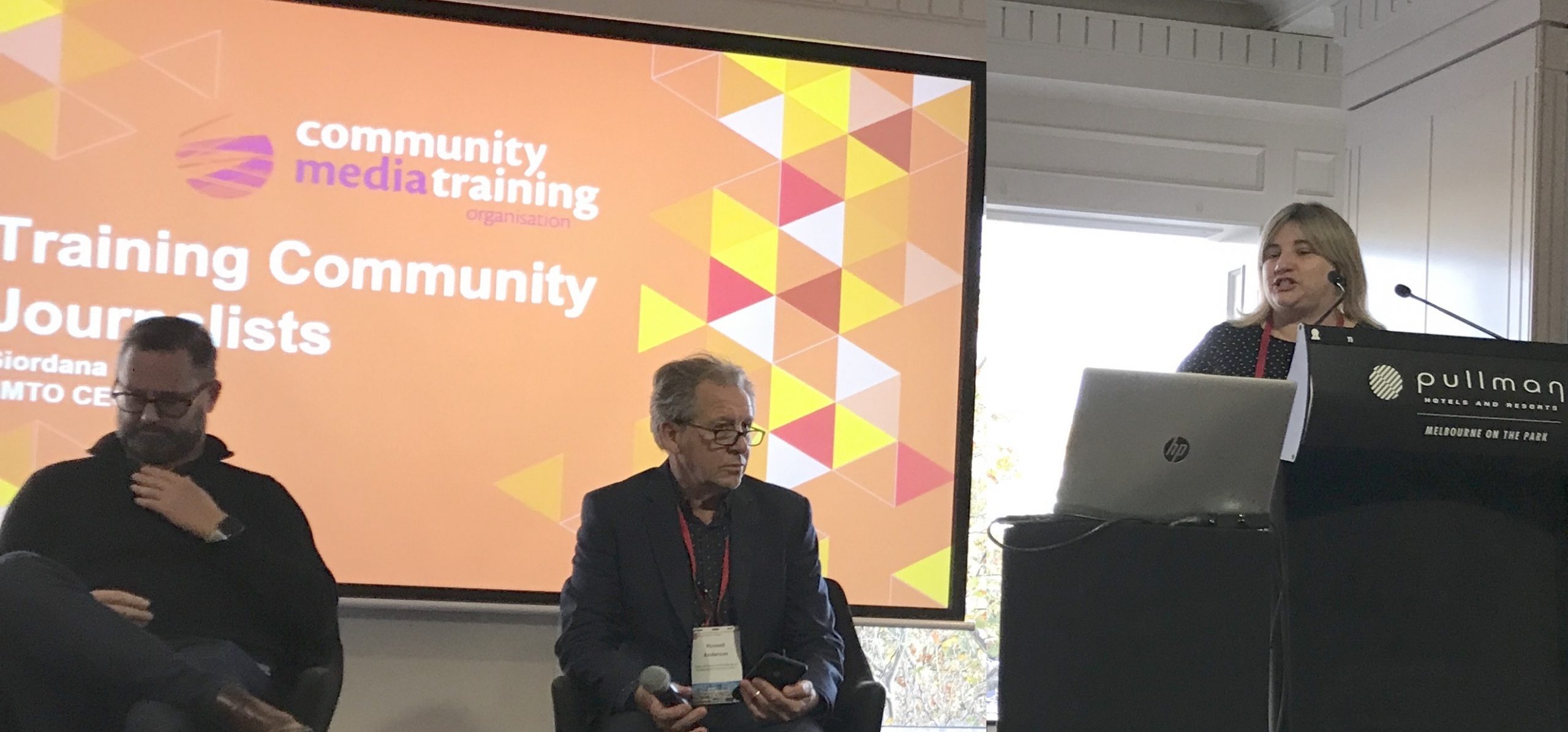
Giordano Caputo talked about the journalism courses offered by CMTO. “Ethics is an important part of our course… and we go through basics of reporting and editing, bulletins and sharing of content across news services.”
Hyper local and micro local stories are in high demand from local communities, which is why the course has been developed. 36 Broadcasters have already been trained in the community journalism course.
NEMBC CEO Russell Anderson talked about the two grants that the community sector has won from the Walkley Foundation Meta grants to do more news and current affairs, because of the increased recognitionof news within the community broadcasting sector. “We didn’t necessarily have lots of journalism skills or the money or resources to do it… but we just started anyway. we now do daily news in 24 languages, plus explainers on radio stations, social media, website, Whatsapp Audiograms and soundcloud.”
Conference Details here
